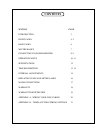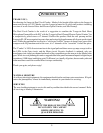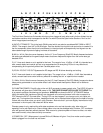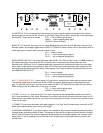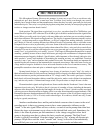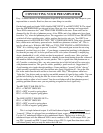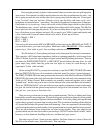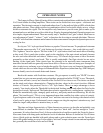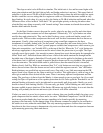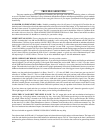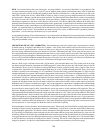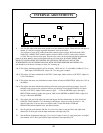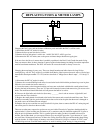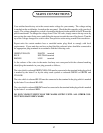
OPERATION NOTES
The Langevin Electo-Optical Limiter follows certain traits and traditions established by the UREI
LA-3A and similar levelling amplifiers. These traits can be divided into two aspects - electronic and
operation. The electronic concept is simple and rather clean. Use the audio to light up LEDs which shine
onto photo-resistors. These photo-resistors in combination with a fixed resistor simply act as a voltage
divider to attenuate the signal. The line amplifier only functions to provide extra gain to make up for
attenuation losses and then act as a fine cable driver. Simple, elegant and minimal. Operation aspects are
also simple, elegant and minimal. There are usually only a "threshold" and "gain" control. Most have no
user adjustment of "attack", "release", "ratio" or functions for de-essing or external sidechains. The user
is "stuck" with fixed time constants and a feature list that seems anemic compared to dynamic processors
costing far less.
So why are "LA" style opto based limiters so popular ? Several reasons. To paraphrase Letterman
"The number one reason why "LA" style limiters are favorites is because.... they work right on vocals".
This "rightness" has a few aspects. The first is that "LA" style limiters don't leave much trace of limiting
as they work. This is partly due to tubes, partly to the simplicity of the opto circuit and partly because
the user can't alter the attack and release. Almost every VCA based design seems to leave electronic
personality on that critical vocal track. This is usually undesirable. Our Opto circuits has no active
limiting in the signal path. Tube circuits have the potential to be musically more transparent than
transistors because tubes are generally more linear devices. However, there are many poor examples of
tube circuits in use, and many ways to butcher the quality. We chose to use our Langevin line amplifier
circuit which we also use in the Langevin Enhanced Pultec Equalizers (rather than copy UREI designs)
because frankly our circuit sounds better and cleaner.
Back to this matter with fixed time constants. We get requests to modify our "ELOP" for more
controls but we get even more people raving about how great and useful the "ELOP" is now. The attack,
release, knee and ratio (curve) are a function of the Vactrol Cell we chose to use. The choice was based
on the attack and release characteristics. Changing the time values in this circuit involves different
choices of Vactrols. Not practical. Not in a "LA" style limiter. There is a major advantage to fewer
controls. You simply adjust the Threshold for the desired limiting amount and adjust the Gain for the
desired level to tape - then record. The limiter does what its supposed to do - nothing more - nothing less.
Kinda like automatically right, strangely quick and easy, and pretty much non-distracting. We use the
phrase "Set it and forget it". This is a very important feature that would be lost with a variety of controls.
A good engineer wants to be ready to record "now" and does not want to be fussing with controls while
a lead vocal is going to tape. Unfortunately most compressors drag the engineer's attention away (and
often the singer's and producer's attention away as well).
The time and slope characteristics of Opto elements are not easy to describe and probably even
more difficult to simulate. The attack is fast, not super fast "brick wall", but fast enough to "catch"
consonants. It is also a function of level. At lower reduction levels and lower peaks the Vactrol is slower.
It becomes faster with sharp peaks and heavier levels of reduction. Release is similar but 10 to 20 times
slower. Quick peaks are handled with quick release and as gain reduction nears zero the Vactrol gets
slower like gentle braking to a stop. It is possible to"trick out" an opto circuit for conventional operation
but generally the results have been not well liked.
10



